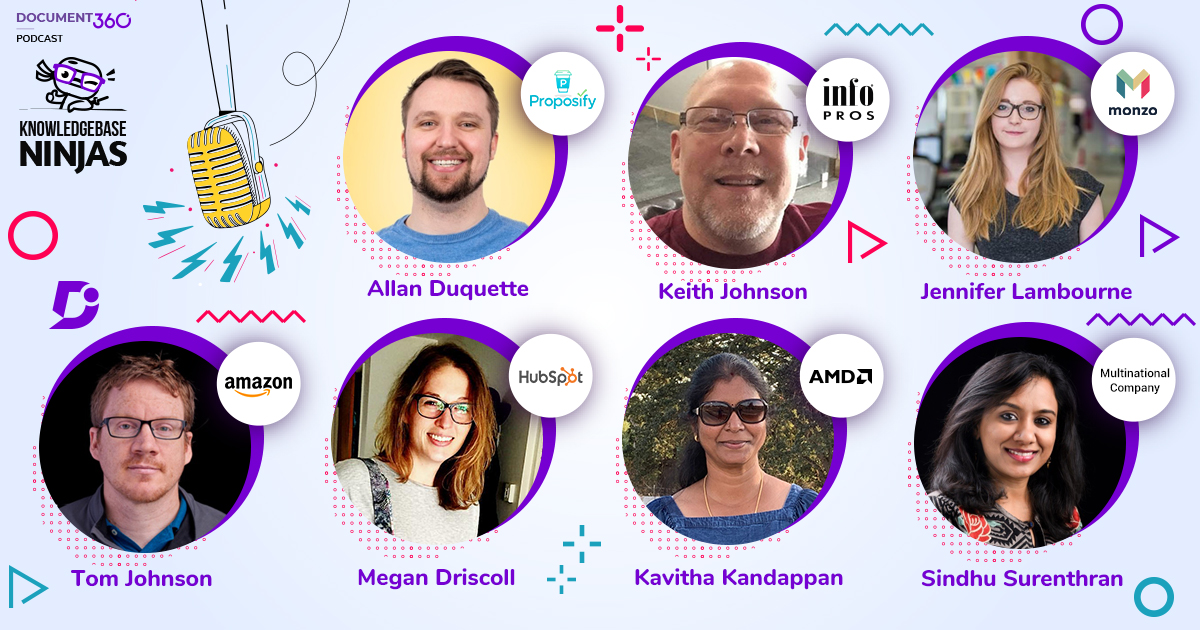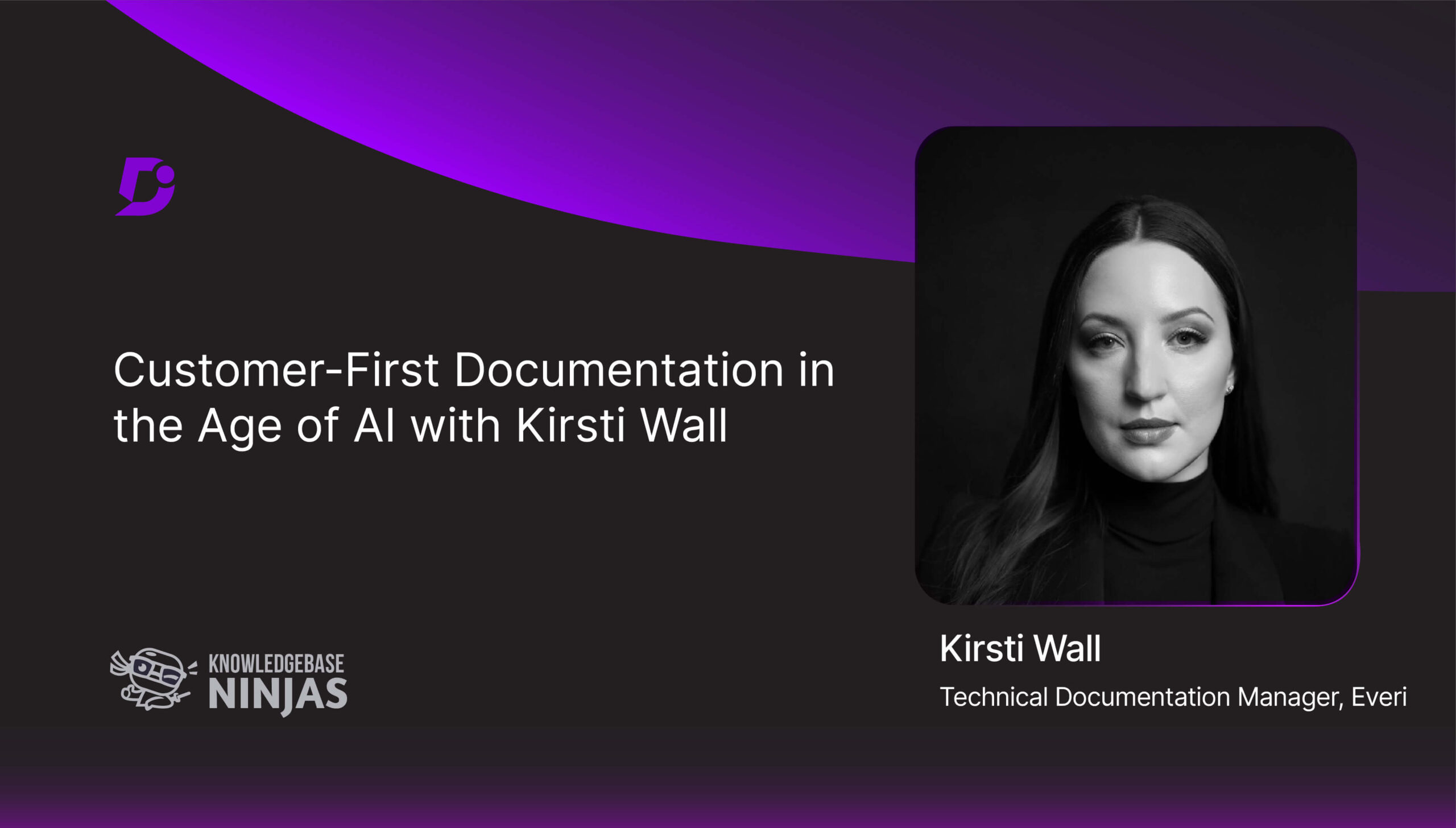As you may or may not know… we run what has now become the world’s most downloaded documentation focused podcast!
We have been interviewing the best and brightest minds in the world of technical writing and documentation since December of last year and April… was an interesting month.
We welcomed seven guests onto the show: Allan Duquette, Keith Johnson, Jennifer Lambourne, Tom Johnson, Megan Driscoll, Kavitha Kandappan, and Sindhu Surenthran – we are deeply grateful for the time each of them spent with us to record their episodes.
I have summarised five key insights from these episodes below:
“Stumbling into documentation through education…”
Three out of the five Knowledgebase Ninjas ‘stumbled’ into their career in documentation whilst at college/university:
- Keith started out his career training people how to use IT equipment. Keith was a senior editor at his college newspaper, he took the chance to switch careers and utilize his training skills but with the written word.
- Jennifer stumbled into technical writing after choosing the arts over software development when she chose to study English literature at the University Of Cardiff.
- Tom majored in English and achieved a masters in creative writing… he then moved into teaching writing at the American University Of Cairo
Technical writing and managing documentation is maybe not one of the top careers that school children select, but when you do spend time there… it can be an extremely rewarding career.
The crucial factors in documentation creation…
We asked all of the Knowledgebase Ninjas what important factors they consider when creating their companies documentation, this brought out a couple of interesting conversations about how to better your documentation.
Jennifer shared her single most important factor is putting your users first, you can do this through asking:
- Who are your users?
- What are they trying to achieve?
- What content format or style of content can help your user at this time?
Once this has been decided and the content has been created, she highlights the next important factor which is benchmarking and measuring the documentation to make sure the content is actually helping people.
The number #1 most important factor to consider when creating documentation is “the customer themselves”. Megan keeps an eye on where HubSpot is seeing a high volume on customer support tickets and then their team will focus efforts on those areas.
Quote of the month…
Megan Driscoll of HubSpot said:
“Do not underestimate the impact that documentation has throughout other departments of your business.”
Megan’s team are constantly updating their documentation based on feedback from customer and updates made to the product by internal development teams. Megan’s team also conduct internal research with customer facing teams to understand which areas of their documentation could be improved.
The ROI of documentation
Jennifer shares that the methods they use to measure the ROI on internal and external documentation differ greatly. For example, documents that have been written to detail a proposed technical change may be measured by ensuring the proposals are up to date or accurate.
Regarding external documentation, Monzo are currently undergoing a benchmarking exercise to understand how confident the customer operations team is in their external support documentation. This benchmark will enable Jennifer’s team to test and improve going forward.
However, Kavitha disagrees with this statement by saying that you cannot put a number on how documentation supports a user’s need. A few questions to ask when measuring documentation successes are:
- Are we reducing the number of support calls?
- How many clicks are we generating from our documentation?
Most importantly, you must ask for feedback from your customers when they use your site. This is how you can get close to measuring an ROI of your documentation.
Recommended documentation related resources:
See the documentation resources shared by the Knowledgebase Ninjas in Apri:
ReadMe Checklist – Daniel Beck
Developing Quality Technical Information – IBM
Microsoft Style Guide – Microsoft
And there we are!
Feel free to check out each individual episode here:
Sindhu Surenthran of a Multinational Company
Kavitha Kandappan of AMD
Megan Driscoll of HubSpot
Jennifer Lambourne of Monzo Bank
Keith Johnson of InfoPros
Allan Duquette of Proposify
Thanks for reading!!




 –
– 

